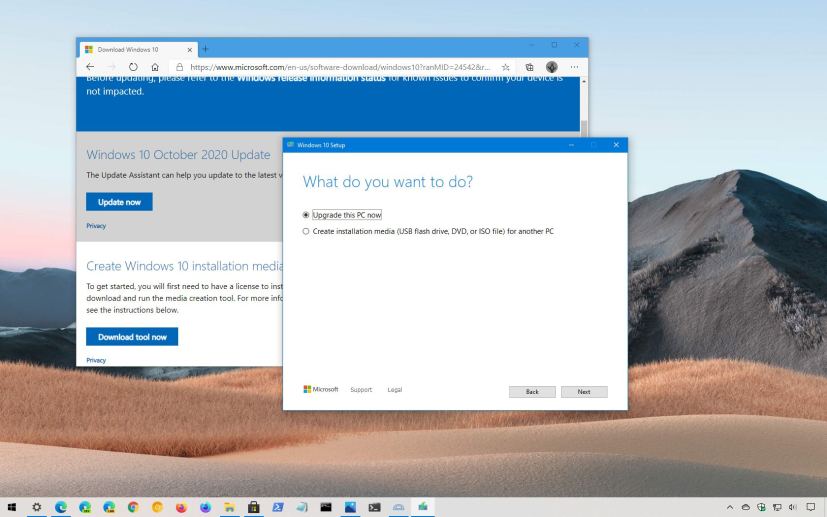
On Windows 10, the best way to upgrade to version 21H1 is using the Windows Update settings. However, Microsoft supports other methods to install a new release using the Media Creation Tool.
The Media Creation Tool is a tool that allows you to download the installation files to create a USB flash drive setup media or ISO file to perform a clean install. Also, you can use the same tool to complete an in-place upgrade without creating a separate bootable media.
You can download the Media Creation Tool from this Microsoft support website to download the Windows 10 21H1 files to perform a clean installation, an in-place upgrade, or to create an ISO file as soon as it becomes available during the first half of 2021.
The Media Creation tool includes an option to create USB bootable media, which then you can use to boot the computer to upgrade Windows 10 21H1.
In the case that the tool does not work with your device, the Update Assistant is another utility you can use to perform an in-place upgrade.
Microsoft is expected to release the first semi-annual update sometime during the spring. As per usual, the new version will roll out to devices gradually, and it could take weeks and months before everyone receives the feature update.
The company will start with devices that are known to have a smooth experience, and then, when Windows 10 21H1 is proven not to be significantly buggy, the deployment will expand to more devices.
Windows 10 21H1 is only an incremental update that will be available as a quality update for devices already running the October 2020 Update and May 2020 Update, and as a regular upgrade for devices using an older version.
If you need to download the Windows 10 21H1 ISO file directly, you can skip the Media Creation Tool using this workaround.
